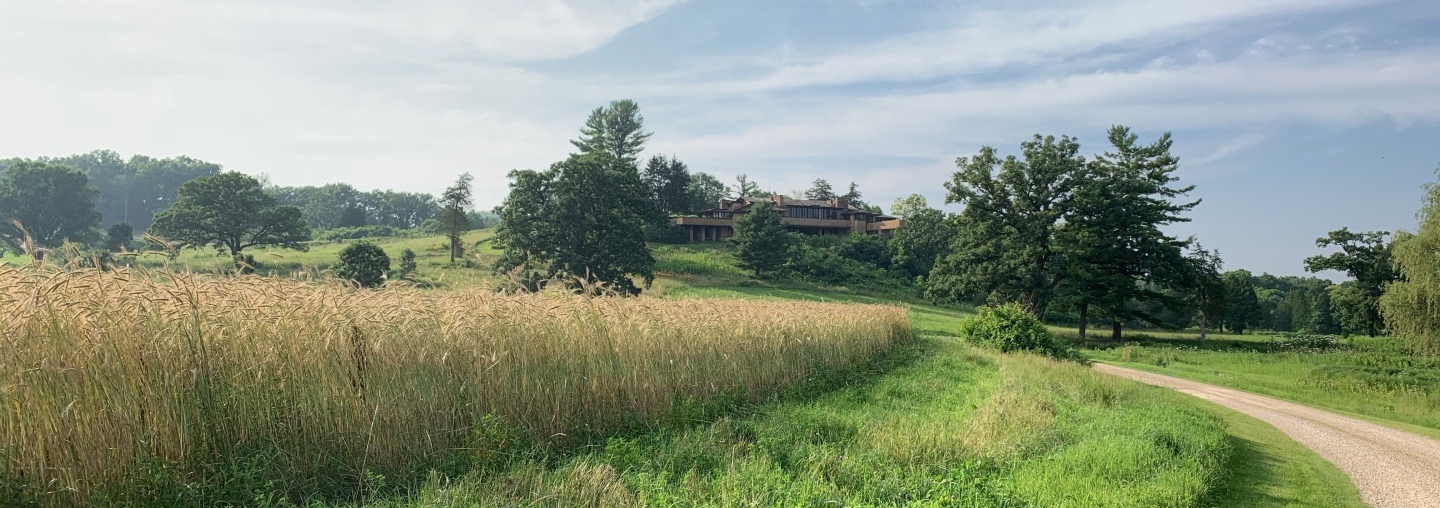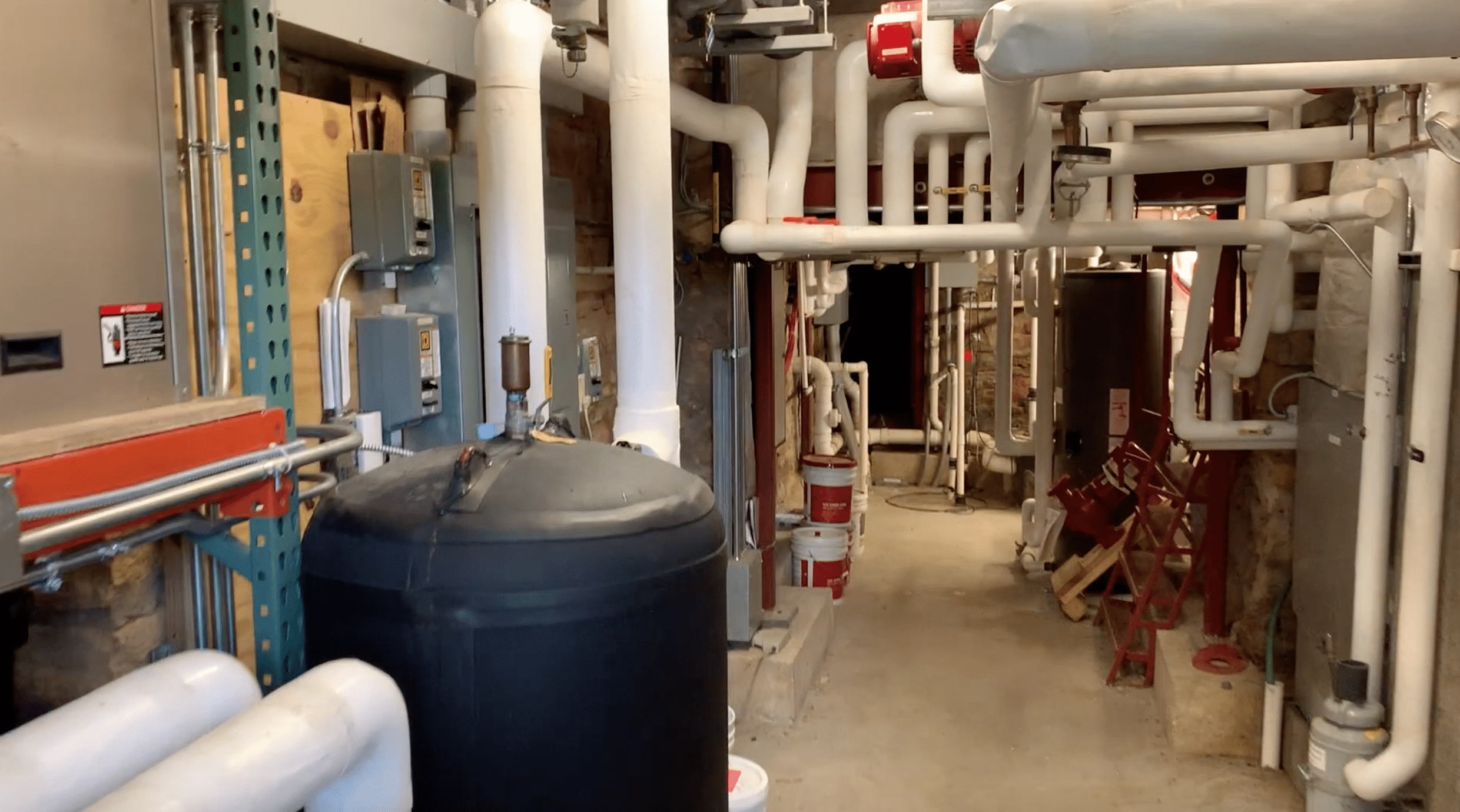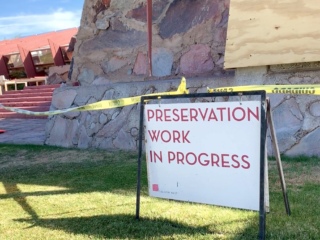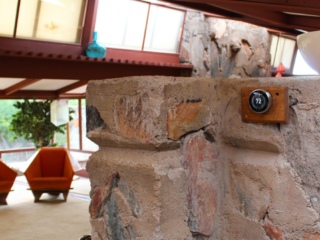
Living with Nature: Geothermal Energy
Frank Lloyd Wright Foundation | Jul 23, 2019
As the Frank Lloyd Wright Foundation embraces more sustainable, innovative practices in our preservation work and beyond, we’re sharing some of these methods, and providing some tips on how you can incorporate these practices into your own home and life. Here, we discuss the topic of geothermal energy and share how we’ve harnessed it from the Earth to cool and heat Taliesin.
Even though we may not realize it, there is a renewable, clean method for heating and cooling, and generating electricity just below our feet. Installing a geothermal system, and harnessing geothermal energy, is the process of digging just below the Earth’s surface and installing a loop system to harness the Earth’s natural temperature underground to cool and heat spaces, and even generate electricity. In this edition of Living with Nature: Sustainable Practices from the Frank Lloyd Wright Foundation, we’re focusing on geothermal energy. Last summer at Taliesin, the Frank Lloyd Wright Foundation and Taliesin Preservation, Inc. preservation teams, with the help of Wisconsin geothermal loop contractor G.O. Loop, installed a geothermal heating and cooling system to help maintain comfortable temperatures inside the residence wing of Taliesin year-round, in a more cost-effective, energy-efficient way.

This project supports our goal to not only preserve the historic integrity of Frank Lloyd Wright’s homes, but ensure maintenance practices and outcomes are more sustainable.
Geothermal heating and cooling systems use the natural temperature of the ground to heat and cool air that moves through the building. The temperature 10-15 ft. below ground at Taliesin is near 50 degrees year-round. Because geothermal heating and cooling systems—also referred to as geo-exchange systems—harness the temperature of the ground, they are much more environmentally friendly than traditional heating and cooling systems, and greatly reduce heating and cooling bills.
The preservation teams installed 14 loops that were horizontally bored, 10-15 ft. below grade. These 14 loops were then connected to supply lines that were horizontally bored into the historic boiler room at Taliesin, where all other pumps and machinery for the building are located.
“The installation of the geothermal systems is quite a drastic change. We now have modern technology in a boiler room that used to house a wood fired steam boiler,” said Ryan Hewson, Foundation preservation manager at Taliesin. “We are looking forward to the improvements that this update will make, and the changes we can make in the future to utilize innovative and sustainable technologies.”
This technique can also be used for more than just temperature regulation. Electricity can be generated by harnessing geothermal energy. The U.S. Geological Survey estimates that untapped geothermal resources in the United States, if developed, could supply the equivalent of 10 percent of today’s energy needs.
Geothermal is a growing, renewable source of energy, with the United States currently being the largest producer of installed geothermal power generation capacity. In 2018, the United States had a total of 3,639 megawatts (MW) installed, with the second largest producer being Indonesia at 1,948 MW.
Even if installing a geothermal system at your home is not a possibility, it’s important to consider your energy usage, and look into more sustainable ways for heating, cooling, and generating electricity.

The geothermal system installed at Taliesin near Spring Green, Wisconsin.
Check back next month to learn more about the sustainable practices we’re using at Taliesin and Taliesin West, and for even more tips on how you can help contribute to a more sustainable, beautiful world.
Living with Nature: Sustainable Practices from the Frank Lloyd Wright Foundation is a year-long campaign where we’ll be sharing sustainable practices and how they play an important part in conservation for National Historic Landmark sites, like Taliesin West in Arizona and Taliesin in Wisconsin. Along the way we’ll be sharing helpful tips on how you can incorporate these practices into your own life, to help you live a more green life.




